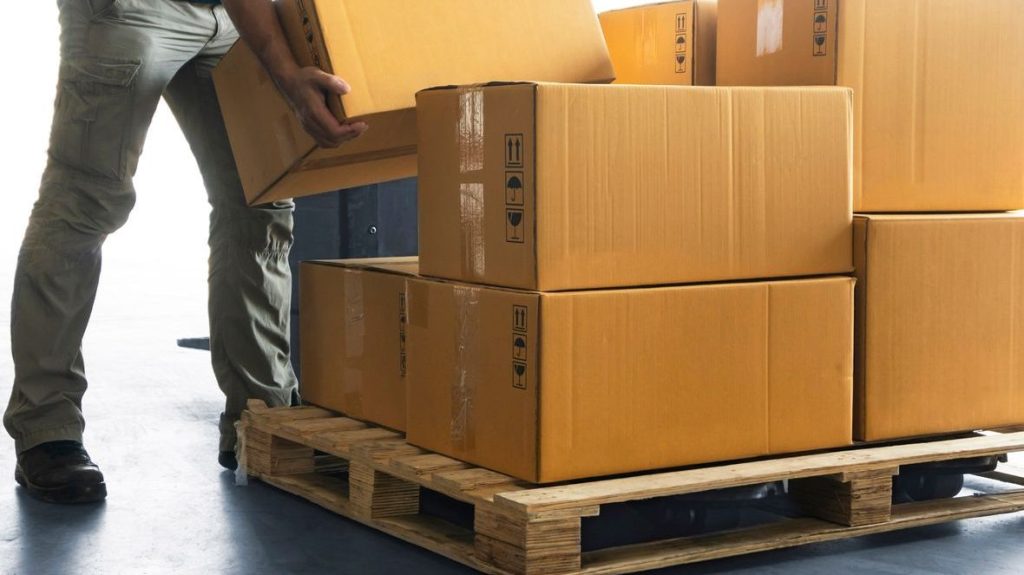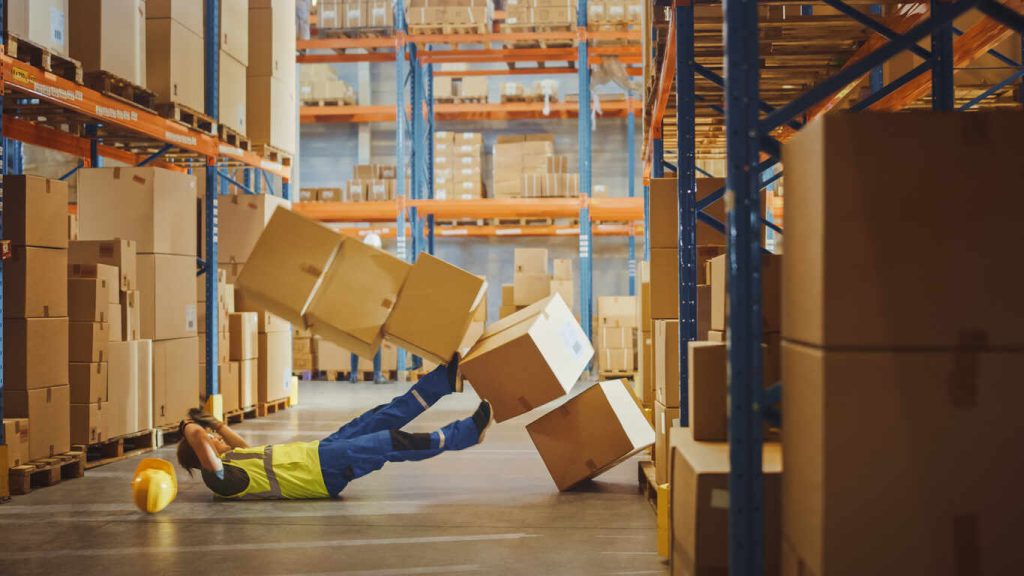Introduction
In the fast-paced world of material handling, mastering the art of pallet stacking is not just about efficiency; it’s about safety too. Double stacking pallets, a common practice aimed at maximizing warehouse space and reducing costs, requires a blend of knowledge and caution. While it offers significant benefits like improved storage density and operational efficiency, it’s not without its challenges. Understanding the fundamentals of double stacking, from what it entails to the benefits and essential considerations, is crucial for any business looking to optimize their warehouse operations without compromising on safety. Let’s dive into the world of double stacked pallets and uncover the strategies that make this practice a cornerstone of smart warehouse management.
The Basics of Double Stacking Pallets
What is Double Stacking?
Double stacking refers to the practice of placing one loaded pallet on top of another. This method is widely used in warehouses and distribution centers to maximize storage space and improve the efficiency of freight transportation. However, it’s not as simple as just stacking one pallet over another; it requires careful planning and execution to ensure safety and stability.
Benefits of Double Stacking
The primary advantage of double stacking pallets is space optimization. By stacking pallets, warehouses can significantly increase their storage capacity without expanding their footprint. This method also leads to cost reduction, as it maximizes the use of available space, reducing the need for additional storage equipment or facilities. Furthermore, double stacking can enhance operational efficiency by allowing quicker loading and unloading processes, which in turn speeds up the supply chain.
Key Considerations Before Implementing Double Stacking
Before diving into double stacking, several factors must be evaluated to ensure it’s a viable and safe option. First, the height of the warehouse should be considered; there must be enough vertical space not only for the double stacked pallets but also for safe handling and transportation. The condition of the pallets is another critical factor; they must be sturdy and in good shape to withstand the weight of another pallet. Lastly, load stability is paramount; the goods on the pallets must be securely wrapped and balanced to prevent shifting or toppling during movement or storage.
Implementing double stacking in your warehouse can significantly improve space utilization and operational efficiency. However, it’s essential to approach this method with a detailed understanding and careful planning to ensure the safety and stability of your goods and operations. By considering the key factors and benefits outlined above, businesses can make informed decisions about whether double stacking is the right strategy for their material handling needs.
Strategies for Safe Double Stacking
Selecting the Right Equipment
The foundation of safe double stacking begins with the right equipment. Utilizing the correct forklifts and pallets is not just a recommendation; it’s a necessity. Forklifts must be capable of handling the height and weight of double stacked pallets safely. Similarly, pallets used in double stacking should be durable and designed to withstand the load. Choosing equipment that meets these requirements ensures that the double stacking process is both efficient and safe.
Proper Training for Warehouse Staff
Safety in double stacking is not solely dependent on the equipment but also on the people operating it. Comprehensive training for warehouse staff is crucial. Employees should be well-versed in safety protocols and stacking techniques specific to double stacking. This training should cover everything from the correct way to load and unload pallets to understanding the weight distribution and stability of stacked loads. A well-trained team is your best defense against accidents and inefficiencies.
Implementing Load Stability Measures
Stability is key when it comes to double stacking. Implementing measures to secure loads can prevent shifting and toppling, which are common risks associated with double stacked pallets. Techniques such as using stretch wrap, banding, and edge protectors can help maintain the integrity of the load during movement and storage. Additionally, ensuring that loads are evenly distributed and not exceeding weight limits contributes significantly to the overall stability of double stacked pallets.
Regular Inspection and Maintenance
Routine checks are essential in maintaining the safety and longevity of double stacking equipment and pallets. Regular inspection and maintenance of forklifts, pallets, and other related equipment help identify potential issues before they lead to accidents. This includes checking for damages or wear and tear on pallets, ensuring forklifts are in good working condition, and verifying that all safety equipment is intact and functional.
By adhering to these strategies, warehouses can significantly mitigate the risks associated with double stacking. Ensuring the use of appropriate equipment, providing thorough training, implementing stability measures, and maintaining regular inspections are all critical steps in creating a safe and efficient double stacking system.
Common Pitfalls and How to Avoid Them
Overloading Pallets
One of the most frequent mistakes in double stacking is overloading pallets. Understanding the weight limits and distribution is crucial to avoid this pitfall. Each pallet and load has a specific weight capacity, and exceeding this can lead to structural failures, product damage, or even workplace accidents. To prevent overloading, always check the maximum weight capacity of your pallets and ensure that the load is distributed evenly across the surface. This not only maintains the integrity of the pallet but also ensures the safety of the workers and the warehouse environment.
Ignoring Load Compatibility
Another common oversight is ignoring the compatibility of items being stacked. Not all goods are suitable for double stacking, and stacking incompatible items can result in damage or instability. It’s essential to consider the shape, size, and weight of the items, as well as their susceptibility to pressure and stacking. Strategies for stacking compatible items include grouping similar items together and using dividers or spacers to distribute weight evenly. This approach minimizes the risk of damage and maintains the stability of the stack.
Neglecting Safety Guidelines
The disregard of safety guidelines is a significant risk factor in double stacking. Skipping safety protocols can lead to severe consequences, including injuries and legal repercussions. It’s imperative to adhere to warehouse safety standards and OSHA regulations at all times. This includes proper signage, worker training, and the use of safety equipment. Regular safety audits and meetings can help reinforce these guidelines and ensure that all staff members are aware of and comply with safety requirements.
By addressing these common pitfalls, warehouses can enhance their double stacking practices and create a safer, more efficient environment. Understanding the limits and requirements of your materials, ensuring compatibility, and adhering strictly to safety guidelines are all essential steps in avoiding the common mistakes associated with double stacking pallets.
Conclusion
In the realm of material handling, the practice of double stacking pallets stands out as a significant strategy for enhancing space utilization and operational efficiency. However, as we’ve explored, this method requires more than just stacking one pallet on top of another. It demands a comprehensive approach that encompasses understanding the basics, implementing strategic safety measures, and avoiding common pitfalls.
The journey through the world of double stacking has highlighted the importance of adhering to key considerations such as warehouse height, pallet conditions, and load stability. Moreover, the emphasis on selecting the right equipment, providing proper training, and maintaining regular inspections underlines the commitment needed to ensure a safe and productive environment.
Addressing common pitfalls like overloading pallets, ignoring load compatibility, and neglecting safety guidelines has underscored the balance required between efficiency and safety. These challenges remind us that while double stacking can offer significant benefits, it also demands respect for the principles of safe material handling.
In conclusion, double stacking pallets is not just a method to increase storage space; it’s a comprehensive approach that, when executed correctly, can significantly enhance the efficiency and safety of warehouse operations. By embracing the strategies outlined, businesses can ensure that their double stacking practices contribute positively to their overall operational success.
FAQ
What is a double stacked pallet?
A double stacked pallet refers to the practice of placing one fully loaded pallet on top of another, effectively creating a two-tiered storage unit. This method is commonly used in warehouses and distribution centers to maximize vertical space and improve the efficiency of storage and transportation processes. By stacking pallets in this manner, businesses can optimize their available warehouse space, reduce storage costs, and streamline their logistics operations.
However, double stacking requires careful consideration of pallet stability, load compatibility, and weight distribution to ensure safety and prevent damage to goods. It’s essential that both the pallets and the goods they carry are suitable for double stacking and that all safety guidelines are followed to avoid accidents and product loss. Proper equipment, such as forklifts capable of handling the increased height and weight, and trained personnel are crucial to the safe and effective implementation of double stacked pallets.
Is it safe to double stack pallets?
Double stacking pallets can be safe when done correctly, adhering to strict guidelines and safety standards. The safety of double stacking largely depends on factors such as the condition and strength of the pallets, the weight and type of goods being stacked, and the equipment used for stacking and transportation. It’s crucial that the pallets used are in good condition and designed to withstand the load. Additionally, the items on the pallets should be stable and evenly distributed to prevent shifting or toppling.
However, it’s important to note that not all products or pallets are suitable for double stacking. Businesses must conduct a thorough assessment of their goods, considering factors like weight, size, and fragility, before deciding to stack pallets. Proper training for warehouse staff on safe stacking techniques and regular inspections of pallet conditions and stacking arrangements are essential to maintain a safe working environment. Following these guidelines can help ensure that double stacking pallets is a safe practice.
Can you stack 2 pallets on top of each other?
Yes, you can stack two pallets on top of each other, but this should be done with caution and adherence to specific safety guidelines and best practices. The ability to safely stack two pallets depends on several factors, including the strength and condition of the pallets, the weight and distribution of the load on each pallet, and the overall stability of the stacked pallets. It’s essential that the pallets used are designed for stacking and are in good condition, without any significant damage or weaknesses.
Before stacking, ensure that the bottom pallet can support the additional weight of the top pallet and its contents. The goods on both pallets should be securely wrapped or strapped to prevent shifting that could lead to instability or falling items. Additionally, the height of the stacked pallets should not exceed the limits set by your warehouse safety protocols or the capabilities of your material handling equipment. Proper training for staff in safe stacking techniques is also crucial to prevent accidents and ensure a safe working environment.
What is the best way to double stack pallets?
The best way to double stack pallets involves several critical steps to ensure safety and stability. First, assess the strength and condition of the pallets; they should be sturdy, intact, and capable of bearing the load without bending or breaking. Ensure that the goods on the pallets are evenly distributed and securely wrapped or strapped to prevent movement or imbalance. The weight of the top pallet should not exceed the bottom pallet’s load capacity, and the overall height should be within safe limits for your specific warehouse environment and equipment capabilities.
Additionally, use the correct equipment, such as a forklift or pallet jack, that is suitable for lifting and stacking the pallets safely. Operators should be properly trained and familiar with the equipment and stacking techniques. Before stacking, check the area for obstructions and ensure that the stacking location is level and capable of supporting the combined weight. Regular inspections and adherence to safety guidelines are crucial to prevent accidents and ensure that double stacking pallets is conducted safely and efficiently.




Normally I do not read article on blogs, however I would like to say that this write-up very forced me to try and do so! Your writing style has been amazed me. Thanks, quite great post.
Simply wish to say your article is as amazing The clearness in your post is just nice and i could assume youre an expert on this subject Well with your permission let me to grab your feed to keep updated with forthcoming post Thanks a million and please carry on the gratifying work
Hello, I enjoy reading all of your article post. I wanted to write a little comment to support you.
The beauty of your writing lies not just in its words, but in its ability to evoke deeper emotions and thoughts.
Way cool! Some very valid points! I appreciate you writing this write-up plus the
rest of the site is also very good.